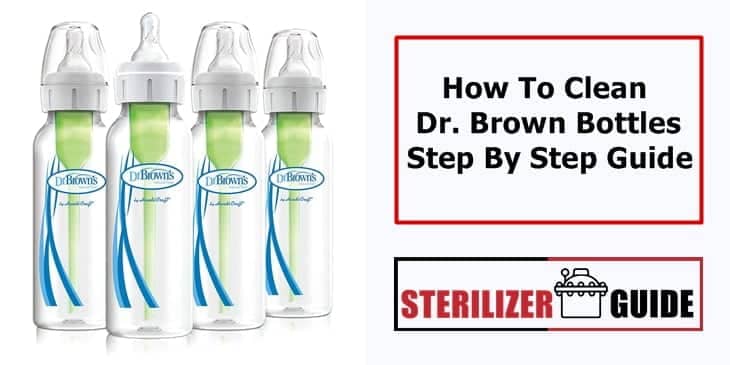Ultimate Guide
Staying safe and keeping our items safe is very important today, hence the need for sterilization. Whether in the home or the hospitals, sterilization is very crucial. Sterilization, therefore, involves the different methods and procedures applied to eliminate living microorganisms on a clean surface. Sterilization aims to destroy every living organism, no matter the form or state. Sterilization has become a vital part of staying healthy today. So, it’s very important to know sterilizer guidelines.
In the healthcare sector, sterilization helps to protect caregivers and patients from infection. A sterile material is one that has undergone a sterilization process. Even in the homes, breast feeding mums need to keep their baby’s feeder sterile to prevent infections. Materials such as towels and footwear also require sterilization. While it is difficult to get rid of 100% microorganisms from a material good sterilization process should be able to deal with 99.9% bacterial and fungi.
The methods of sterilization differ for different materials. There are four main processes of sterilization. These are gas, irradiation, heat, and plasma phase. Among the methods os sterilization, heat has become more popular. Heat sterilization is cheap and works effectively. Heat sterilizers are a common sight in hospitals and large industries today. The downside of heat sterilization is that it can have negative effects on some materials. It can cause the structure of fabrics to weaken over time and may cause corrosion of metals.
The irradiation process of sterilization involves the use of UV lights to burn out microorganisms. UV sterilizers come in different sizes and are available for home use. Small businesses such as hair salons also use UV sterilizers. The importance of UV sterilizers ranges from keeping small equipment like needles safe. There are also specialized UV sterilizers for shoes.
The use of gas sterilization and the plasma phase are best under distinctive conditions. These methods require professionalism to apply.
How to Clean Dr Brown Bottles? Step By Step Guide
As a parent, what is one unique factor you consider when buying your baby’s feeding bottles? Well, it has to be the brand! One of the most recommendable feeding bottles brands in the whole world is non-other than Dr. Brown …
How To Sterilize A Needle? [Ultimate Guide]
When injuries happen, most people are usually caught off-guard. I remember when I was riding my bike on a rainy day towards home when I slipped and fell on a trench. A passerby came to my rescue but I had …
How To Sterilize A Thermometer At Home?
How to sterilize a thermometer is one of the most asked questions all over the internet. Well, thermometers play a very integral role in monitoring temperatures irrespective of the type. Therefore, there is a need to clean it and sterilize …
How To Sterilize Nail Clippers? [Ultimate Guide]
Nail clippers are one of the household items which can harbor harmful bacteria and germs. Therefore, learning how to sterilize nail clippers is very crucial because dirt tends to accumulate on it hence it can easily be transferred. This requires …
Frequently Asked Questions (FAQs) About Sterilizer Guide
We need sterilizers in the hospitals to disinfect solid reusable instruments. Glassware that laboratory scientists use also requires sterilization. Therefore, sterilizers are also vital in the laboratory. Sterilizers also have different uses in the home. Shoes, towels, baby feeders, and hair clippers require sterilization from time to time.
There are different kinds of material that you can sterilize. These include solid items like metal, glass, and plastic. You can also sterilize fabrics.
Yes, Liquid products can undergo sterilization. However, you must check to ensure that the liquid can reach 121-degree Celsius.
Yes. Heat sterilization can cause the internal structure of fabrics and plastic to weaken after some time. Heat sterilization can also cause the corrosion of metal surfaces. However, this only begins to occur after sterilizing the materials many times.
There are certain things to consider before choosing a sterilizer. Most importantly, consider the size of the material you will be sterilizing when selecting a sterilizer.
Yes. Washing the items before disinfecting will help produce better results after sterilization. Washing will help get rid of solid waste like dirt.
Yes. Medical instruments must be put in a package before putting them in the sterilizer. Packaging medical instruments will help reduce corrosion of metal parts. Packaging will also prevent contamination after sterilization.
UV sterilizer bulbs are replaceable and can be easily purchased from the supplier. You can also find replacement bulbs on sale at Amazon.
Yes. Every sterilization has an expiry date. You can find information about this on the sterilizer manual.
How often you need to sterilize depends on how frequently you use the item. Operation medical items require cleaning and sterilization after each operation. First aid instruments that come in contact with body fluid also require washing and sterilization after use. When an item is in a pack, you are required to sterilize after the initial sterilization expires.




